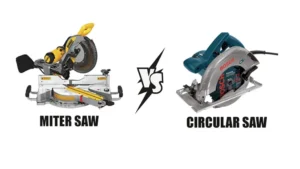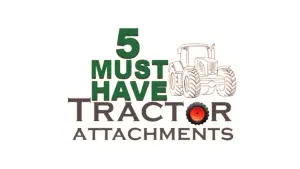5 Ways to Use a Skeleton Bucket for Forestry Management
- October 16, 2024
- 0 comment
Managing forests often means dealing with debris, rocky terrain, and overgrowth, especially after storms or logging activities. Fallen branches, rocks, and dense vegetation can slow operations, pose safety risks, and hinder new plant growth. Traditional clearing methods are labor-intensive and time-consuming, but a skeleton bucket offers an efficient solution.

Designed to sift and sort materials, it simplifies tasks like land clearing, firewood gathering, and trail maintenance. This article explores how a skeleton bucket can be the best bucket for clearing forest debris and achieving efficient rock removal in forestry management.
What Is a Skeleton Bucket Used For?
A skeleton bucket is a specialized attachment designed for machinery like skid steers, loaders, and excavators. Unlike standard buckets, it features a design with spaced tines or slats, allowing smaller particles like soil and sand to sift through while larger materials like rocks, branches, and logs remain in the bucket. This makes it especially effective for sorting, clearing, and site preparation.

In forestry management, this tool is valuable for tasks like debris removal, rock separation, and gathering firewood. Its ability to sift materials makes it an essential land clearing attachment for forestry, streamlining tasks that would otherwise require significant manual effort. This tool is built for durability, designed to handle the rough conditions of forest work, and is an investment that pays off through time saved and improved productivity.
1. Land Clearing
- One of the primary uses of a skeleton bucket in forest management is land clearing, especially after natural events like storms that scatter debris across the forest floor. The skeleton bucket’s spaced tines allow it to collect larger debris like branches and logs while letting soil pass through, making it ideal for efficient land clearing.
- By removing obstacles, the skeleton bucket helps create a cleaner, safer environment, reducing the risk of wildfires and making the area accessible for reforestation. This makes it a go-to choice among land clearing attachments for forestry, allowing forest managers to maintain a well-kept landscape.
- How It Works: The skeleton bucket is attached to machinery like skid steers or excavators. Operators drive the machinery over the cluttered areas, using the bucket to scoop up branches, logs, and rocks while leaving behind valuable topsoil.
2. Rock Removal
- In areas with rocky terrain, efficient rock removal is a crucial part of preparing land for replanting or other forestry activities. A skeleton bucket’s design makes it possible to sift rocks from the soil, leaving the ground ready for new growth or machinery access.
- Rocks can impede equipment movement and damage plant roots, making their removal essential for a productive forest. The skeleton bucket simplifies this task, acting as one of the best buckets for clearing forest debris when it comes to separating unwanted materials.
- How It Works: As the bucket moves through rocky soil, the tines allow smaller particles to fall through, while rocks remain in the bucket. This allows operators to efficiently clear out rocky areas, improving the soil conditions for planting.
3. Firewood Collection
- Collecting firewood can be a time-consuming process, but a skeleton bucket for firewood streamlines this task. It is particularly effective in gathering logs and larger branches left behind after logging or land clearing, making it easier to transport them for processing or use.
- This tool is especially valuable in remote areas where manual collection can be tough. The skeleton bucket allows for quick loading and transport, ensuring that valuable resources like firewood are not wasted.
- How It Works: The bucket’s tines grip logs and larger branches, allowing operators to lift and sort materials. This reduces the need for manual handling, making firewood collection safer and faster.
4. Site Preparation for Planting
- Preparing the land for planting new trees is critical in forestry management. A skeleton bucket helps by clearing away roots, stumps, and small rocks, providing a clean slate for new growth. By using one of the best buckets for clearing forest debris, managers can ensure that new saplings have the space and resources they need to thrive.
- This process supports better soil aeration and nutrient distribution, which are essential for young trees. A well-prepared planting site leads to higher survival rates for new trees, promoting a healthier, more sustainable forest.
- How It Works: Operators use the skeleton bucket to remove underbrush and unwanted plant material, leaving behind a clean area ready for planting. The result is a more suitable environment for new trees to take root.
5. Trail and Road Maintenance
- Maintaining clear roads and trails is vital for forestry operations, whether for routine inspections, emergency access, or timber transport. A skeleton bucket in forest management makes it easier to clear branches, rocks, and other obstacles from trails, ensuring they remain accessible year-round.
- Clear access routes are especially important during wildfire season, as they allow fire crews to reach remote areas quickly. This makes the skeleton bucket an essential tool for maintaining forest safety and accessibility.
- How It Works: As the skeleton bucket moves along trails, it picks up debris while leaving smaller soil particles behind. This helps keep paths smooth and free of obstacles, reducing wear on vehicles and making it easier for personnel to navigate the forest.
Conclusion: Maximizing Efficiency with a Skeleton Bucket
A skeleton bucket is a versatile tool that simplifies many tasks in forestry management. From land clearing and rock removal to firewood gathering and trail maintenance, its unique design allows forest managers to work more efficiently. By choosing the right land clearing attachments for forestry, such as a skeleton bucket, forest managers can save time, reduce labor costs, and support sustainable practices. Whether you need to clear storm debris, maintain access roads, or prepare new planting sites, a skeleton bucket is a cost-effective and powerful solution for managing forested areas.
FAQs
1. What is a skeleton bucket, and how does it differ from a standard bucket?
- A skeleton bucket is a heavy-duty attachment designed with spaced tines that allow smaller materials, like soil or sand, to fall through while retaining larger debris like rocks, branches, and stumps. Unlike a standard bucket, it excels in separating unwanted materials from usable soil, making it ideal for forestry and land clearing tasks.
2. Can I use a skeleton bucket for removing tree stumps and roots?
- Yes, a skeleton bucket is highly effective for removing tree stumps and roots. Its reinforced design allows it to grip and pull up stumps while letting the surrounding soil filter through, reducing the amount of displaced earth and minimizing the impact on the landscape.
3. How does a skeleton bucket help with erosion control in forestry?
- Skeleton buckets are used in erosion control by moving large rocks and logs to build structures like berms or terraces, which help control water runoff and stabilize soil. They allow you to place materials without disrupting the surrounding soil, making them ideal for managing areas prone to erosion.
4. What size of skeleton bucket is best for forestry management?
- The size of the skeleton bucket depends on the specific task and the machinery you are using. Medium-sized buckets are versatile for most forestry tasks, offering a good balance between capacity and maneuverability. Larger buckets are ideal for clearing vast areas, while smaller ones are better for precision work in tight spaces.
5. Is a skeleton bucket useful for firebreak construction?
- Absolutely! Skeleton buckets are excellent for firebreak construction because they can quickly and efficiently clear vegetation and debris that might fuel wildfires. Their design allows operators to remove brush and trees while leaving the soil intact, helping to create effective firebreaks that protect forested areas from spreading fires.

Benjamin Brooks
Forestry AuthorGreetings! I'm Benjamin Brooks, and my journey over the past 15 years has revolved around the fascinating realms of content creation, expertise in snow clearing, and the intricate world of lumberjacking and landscaping. What began as a simple curiosity about the natural world and heavy machinery has evolved into a passionate profession where my love for crafting words intertwines seamlessly with my lumberjacking and garden skills.













Leave your comment